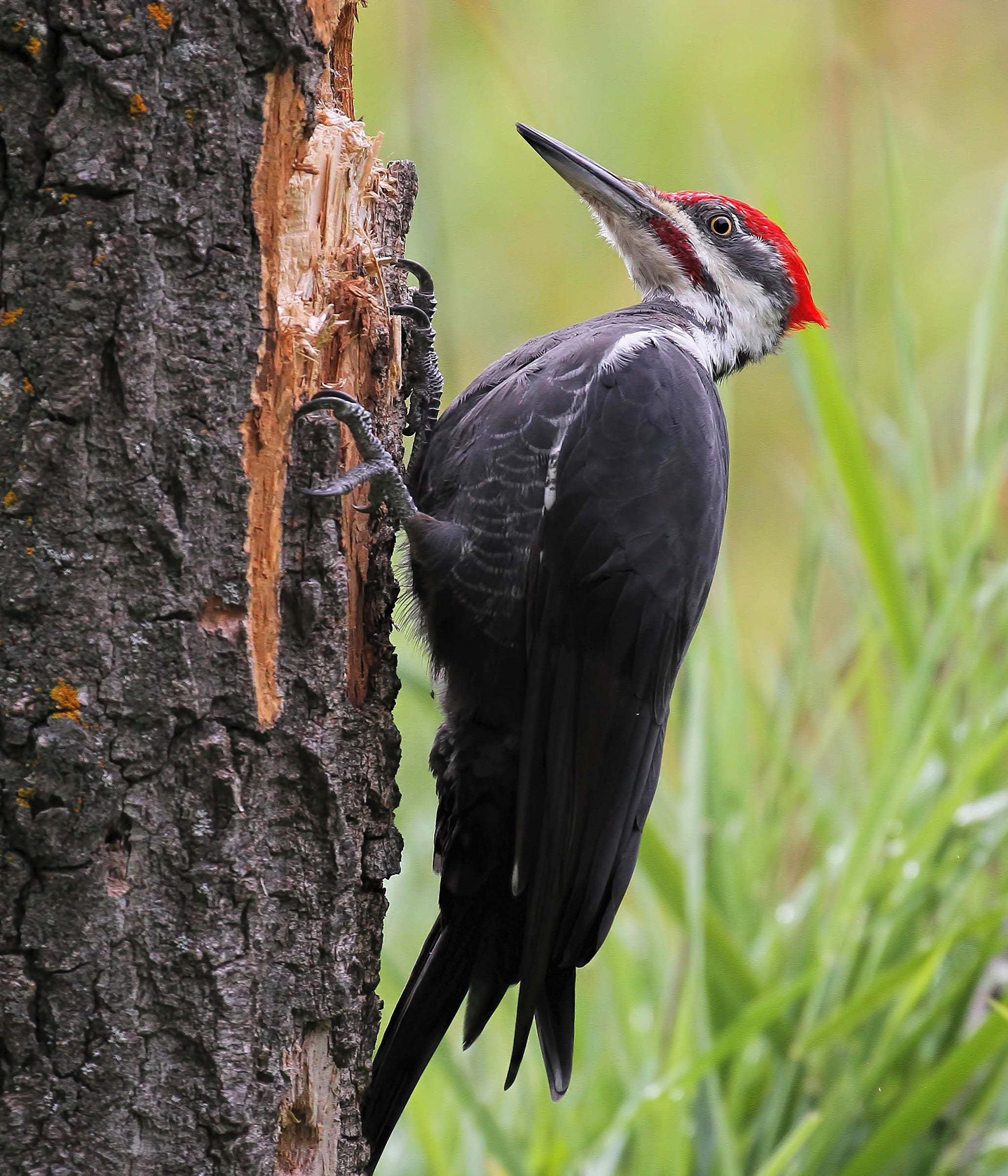Have you ever been captivated by the sight of an immense bird flitting through the treetops, its call echoing in the crisp morning air? If you have, chances are you might have encountered the enigmatic Pileated Woodpecker. This striking avian gem, renowned for its distinctive appearance and fascinating behavior, merits a closer inspection. On “What’s That Wednesday,” we shine a light on these magnificent creatures, delving into their unique characteristics, habitats, encroachments, and ecological significance, all while promising to shift your perspective on these incredible birds.
The Pileated Woodpecker (Dryocopus pileatus), the largest woodpecker native to North America, boasts a remarkable ensemble of features. Possessing a prominent red crest that surmounts its head, this bird’s striking plumage is a combination of black and white, which aids in its recognition when tucked away among the leafy canopies. Adults can reach a length of up to 19 inches, with wingspans extending to nearly 30 inches. Such dimensions lend an air of majesty, effectively masking the bird’s adaptability and dexterity in diverse habitats.
These woodpeckers primarily inhabit mature forests, both coniferous and deciduous, where they excavate substantial cavities in decaying trees and fallen logs. Their preference for these aged environments speaks volumes about their role in the ecosystem as both architects and sustainers. While foraging for insects, mainly carpenter ants and wood-boring beetles, they inadvertently create cavities that provide nesting sites for other species, including owls and small mammals. This symbiotic relationship underscores how they play an integral role in promoting biodiversity, dispelling the archaic notion that these avian creatures exist in isolation from their habitats.
Despite being a symbol of wilderness, Pileated Woodpeckers have adapted to urban settings, demonstrating remarkable resilience in the face of habitat alteration. Urban parks and large estates with ample trees often attract these woodpeckers, allowing residents to observe their extraordinary antics up-close. Watching a Pileated Woodpecker tap rhythmically against a tree trunk is an experience that speaks to the innate beauty of nature’s choreography, where drumrolls resonate through the forest, echoing a lively yet mysterious world of the wild.
One might wonder about the peculiar tapping sounds that emanate from these birds. The Pileated Woodpecker’s drumming serves multiple purposes. Not only does it facilitate the extraction of insects from wood, but it also acts as a behavioral display, signaling territorial claims to potential rivals or mates. Each rhythmic tap reverberates through the vicinity, emitting communication that alerts others to their presence. As the sounds resonate, one can almost feel the pulse of the forests, alive with avian conversations that transcend the barriers of species.
As we delve deeper into their life cycle, Pileated Woodpeckers exhibit monogamous tendencies, often forming long-lasting bonds with their partners. Nesting takes place in the spring, when pairs excavate large cavities in dead or decaying trees. These nests usually measure 12 inches in diameter and are positioned anywhere from 10 to 60 feet above the ground. After laying a clutch of three to five eggs, both parents share nurturing duties, taking turns feeding their young a diet rich in insects and tree sap. Observing the nurturing behaviors of these birds offers a glimpse into a world of parental dedication that often goes unnoticed but is worthy of appreciation.
The conservation status of the Pileated Woodpecker is of particular interest, as these birds are considered of ‘Least Concern’ by the IUCN. However, the loss of mature forests due to urban development poses a significant threat to their habitats. Environmentalists advocate for maintaining large swaths of woodland and dead standing trees, which support not just Pileated Woodpeckers but a myriad of other wildlife. Protecting these forests ensures that their haunting calls will continue to echo through the trees, weaving a narrative that links the past with the present and sustains life for future generations.
Interestingly, traditional Native American traditions have often incorporated the Pileated Woodpecker into their lore. They viewed the bird as a messenger, embodying qualities of warning and insight. This rich cultural significance serves as a reminder of the deep-rooted connections that humans hold with nature. Through storytelling and reverence, the Pileated Woodpecker has found a place in the collective consciousness of various tribes, symbolizing the intricate tapestry of life that interlinks us all.
In conclusion, the Pileated Woodpecker is not merely a bird; it represents an ecological keystone with profound impacts on its environment. Its striking appearance, riveting behavior, and cultural significance offer endless opportunities for curiosity and admiration. As we embody a renewed appreciation for the natural world, let the resilient Pileated Woodpecker serve as a reminder of the delicate balance in which all life participates. The next time you hear that familiar tapping in the woods or spot a flash of red against the trees, take a moment to ponder the remarkable journey of this extraordinary bird, and the vital ecological tapestry it helps to sustain.









Leave a Comment